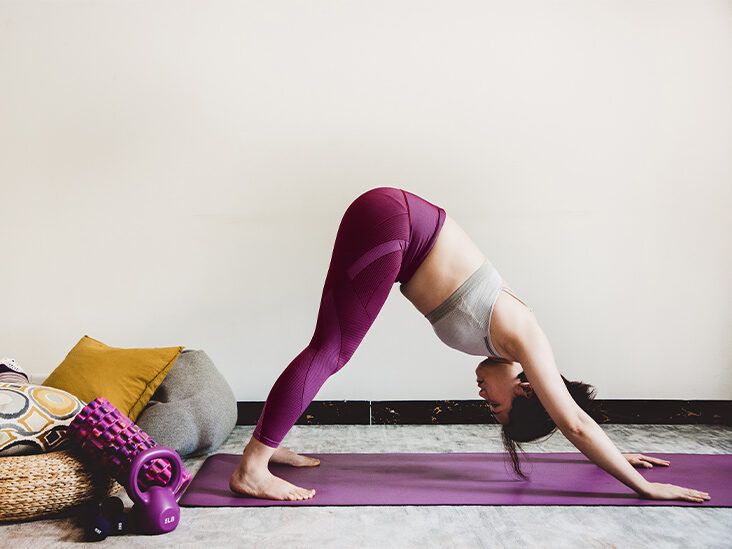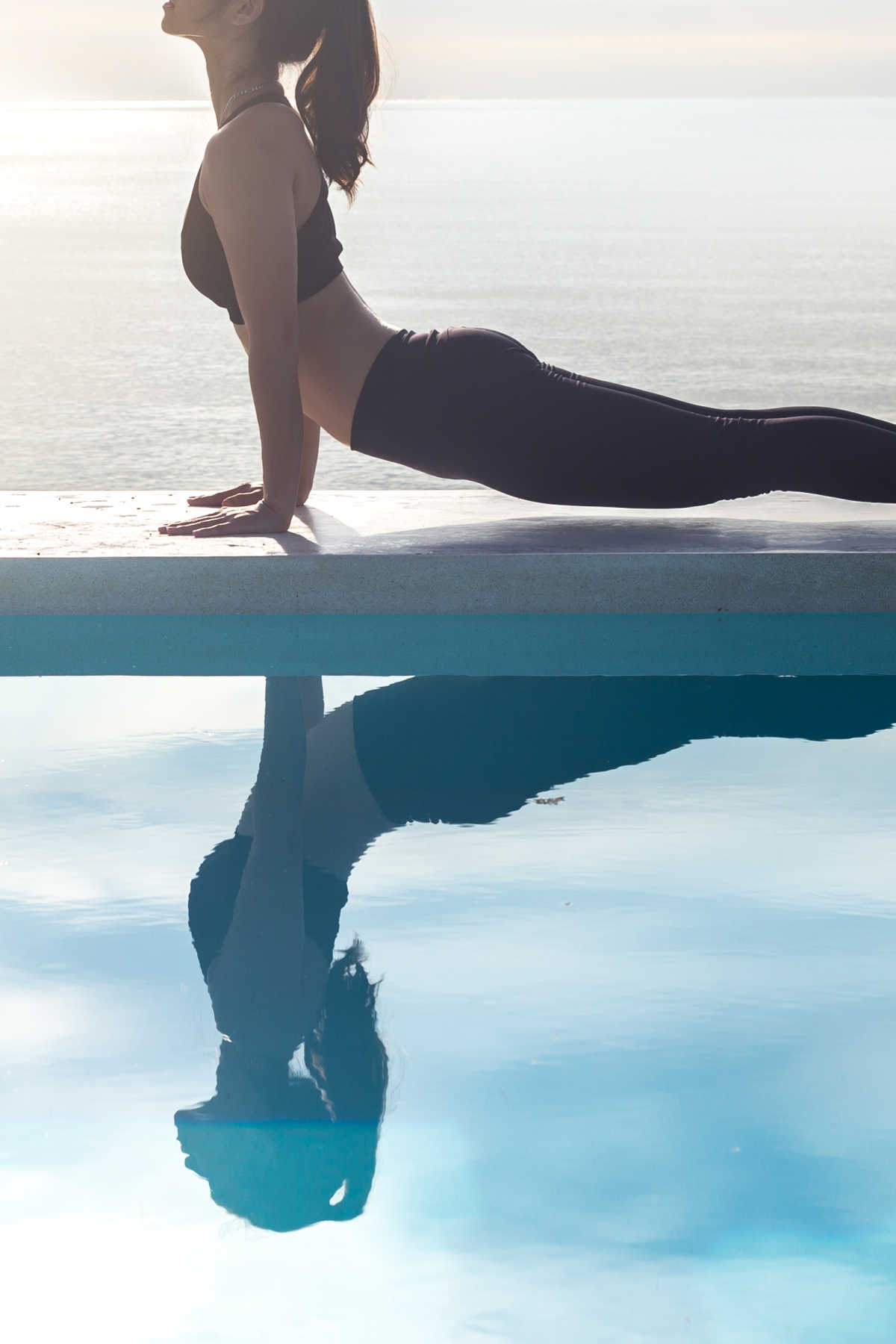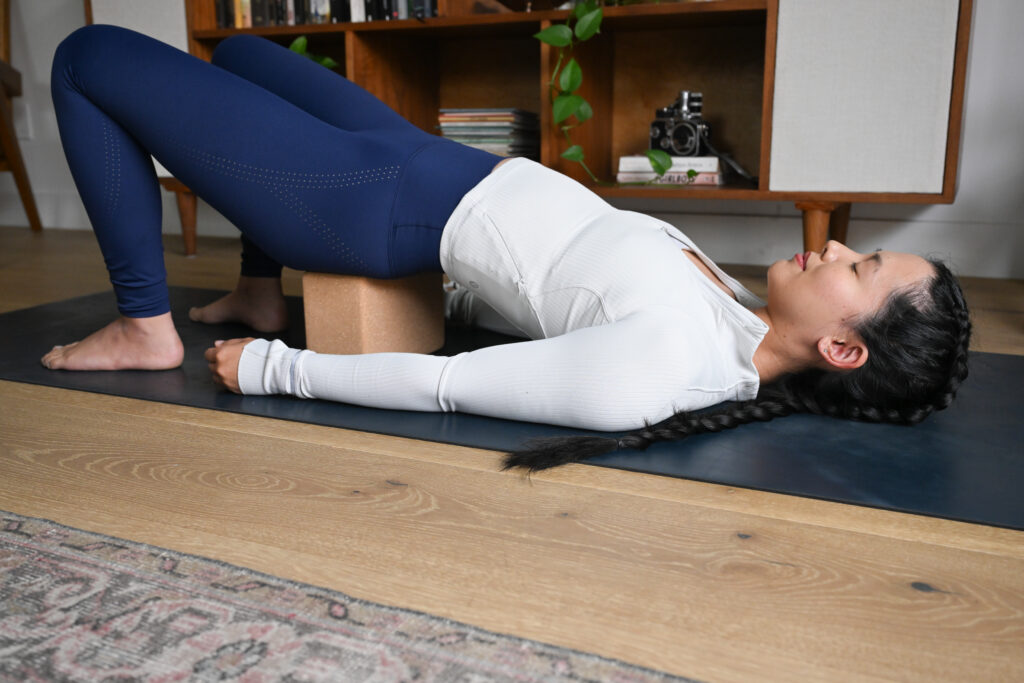Yoga for Back Pain Relief and promoting overall well-being. Yoga helps to strengthen the muscles that support the spine, improve flexibility, and increase circulation to the affected areas. By incorporating specific poses and techniques into your routine, you can target the root cause of your back pain and find lasting relief. Yoga also helps to alleviate stress and tension, which are often contributors to back pain. Making yoga a part of your daily life can significantly improve your quality of life and prevent future episodes of back pain.
Cat-Cow Pose

Explanation and benefits of Cat-Cow Pose
Cat-Cow Pose is a gentle and effective yoga pose that helps strengthen the muscles of your back and spine while improving flexibility. It involves alternating between two movements: the arching of your back (cat pose) and the lengthening of your spine (cow pose).
This pose is beneficial for relieving tension in the spine, improving posture, and enhancing spinal flexibility. It also stretches and strengthens the muscles in your back, abdomen, and shoulders. By practicing Cat-Cow Pose regularly, you can improve your overall spinal health and alleviate back pain.
Explanation and benefits of Cat-Cow Pose

Cat-Cow Pose is a gentle and effective yoga pose. It helps strengthen your back and spine muscles. It improves flexibility and posture. It involves two movements: arching your back (cat pose) and lengthening your spine (cow pose). This pose relieves tension in the spine. It stretches and strengthens your back, abdomen, and shoulders. Regular practice improves spinal health and alleviates back pain. Move through the pose at your own pace, syncing each movement with your breath. Focus on the gentl
Downward-Facing Dog Pose

Description and advantages of Downward-Facing Dog Pose
Downward-Facing Dog Pose, also known as Adho Mukha Svanasana in Sanskrit, is a popular yoga pose that provides numerous benefits for relieving back pain. In this pose, you form an inverted V shape with your body, with your hands and feet firmly grounded on the mat.
This pose helps stretch and lengthen the entire spine, which can relieve tension and tightness in the back muscles. It also strengthens the shoulders, arms, and core muscles, promoting better posture and stability. Additionally, Downward-Facing Dog Pose improves blood circulation to the brain, reducing stress and anxiety.
Proper alignment and modifications for Downward-Facing Dog Pose
To practice Downward-Facing Dog Pose correctly, start on all fours with your hands slightly in front of your shoulders. Spread your fingers wide apart and press them firmly into the mat. Engage your core muscles and lift your hips upward while straightening your legs.
Description and advantages of Downward-Facing Dog Pose
Downward-Facing Dog Pose, also known as Adho Mukha Svanasana in Sanskrit, is a yoga pose that creates an inverted V shape with your body. It involves grounding your hands and feet firmly on the mat while lifting your hips upward.
This pose is beneficial for relieving back pain as it stretches and lengthens the entire spine, reducing tension and tightness in the back muscles. It also strengthens the shoulders, arms, and core muscles, improving posture and stability.
Proper alignment and modifications for Downward-Facing Dog Pose
:max_bytes(150000):strip_icc()/downwarddog1-5c53745b46e0fb000181fa84.jpg)
To maintain proper alignment in Downward-Facing Dog Pose, start by grounding your hands firmly on the mat, shoulder-width apart. Spread your fingers wide and press through all parts of your palms. Engage your arms and lift your shoulders away from your ears.
Keep your feet hip-width apart and press all parts of your feet into the mat. Lift your hips high while maintaining a slight bend in the knees. Lengthen your spine by reaching your tailbone toward the ceiling and drawing your chest towards your thighs.
If you have wrist or shoulder issues, you can modify the pose by coming onto your forearms and resting on your elbows. This will take some pressure off the wrists and shoulders while still providing a good stretch for the back.
If you have tight hamstrings or difficulty keeping the heels on the ground, you can bend the knees slightly to make it more accessible. Gradually work towards straightening the legs over time.
Remember to listen to your body’s limits and never push too far into any pose. Modify as needed and focus on finding a balance between effort and ease in Downward-Facing Dog Pose.
Child’s Pose

Incorporating Child’s Pose into your yoga practice can be incredibly beneficial for relieving back pain. This soothing pose allows you to gently stretch and release tension in your back muscles.
Benefits and relaxation techniques of Child’s Pose
Child’s Pose provides a deep sense of relaxation and stress relief. It can help calm the mind and promote a sense of inner peace. Additionally, this pose gently stretches the hips, thighs, and ankles, which can alleviate tightness in the lower body.
Tips for using Child’s Pose for back pain relief
To get the most out of Child’s Pose for back pain relief, focus on elongating your spine as you slowly lower your torso down towards your thighs. Allow your forehead to rest gently on the mat or a bolster for added support. Deepen your breath and let go of any tension or strain in your back as you melt into the pose.
Remember to honor your body’s limitations and modify as needed. If you have knee issues, you can place a blanket or bolster between your buttocks and heels for added cushioning. If you experience discomfort in your ankles, try placing a rolled-up towel under them for support.
Cobra Pose
Benefits and relaxation techniques of Child’s Pose
:max_bytes(150000):strip_icc()/ChildsPose_annotated-3bdcd72451e84925af5a9fe8118935ed.jpg)
Child’s Pose offers numerous benefits for your body and mind. This restorative pose promotes deep relaxation and helps relieve stress. By gently stretching the back muscles, it can provide relief from back pain and tension. Child’s Pose also helps release tightness in the hips, thighs, and ankles, improving flexibility and mobility in these areas.
To fully experience the relaxation benefits of Child’s Pose, focus on your breath. Take slow, deep breaths, allowing yourself to sink deeper into the pose with each exhale. As you rest your forehead on the mat or a bolster, feel the tension melt away from your body. Allow your body to surrender to gravity and let go of any physical or mental strain.
Child’s Pose can be a grounding and soothing posture that brings a sense of calmness and tranquility to your mind. It helps quiet racing thoughts and promotes a state of mental clarity. Embrace this peaceful moment, allowing yourself to find a sense of inner peace and harmony.
Practicing Child’s Pose regularly can not only provide immediate relaxation but also contribute to long-term well-being by reducing stress levels and improving overall spinal health. Take the time to incorporate this restorative posture into your yoga practice and enjoy its many benefits for back pain relief and relaxation.
Tips for using Child’s Pose for back pain relief
To maximize the benefits of Child’s Pose for back pain relief, keep the following tips in mind:
- Ease into the pose gently: Start by kneeling on your mat with your big toes touching and your knees hip-width apart. Slowly lower your torso down between your thighs, extending your arms forward or alongside your body. Listen to your body’s limitations and only go as far as feels comfortable.
- Use props for support: If you have tight hips or knee discomfort, place a bolster or folded blanket under your torso for added support. You can also use a rolled-up towel under your forehead if needed.
By incorporating these tips into your practice, you can use Child’s Pose as a powerful tool for alleviating back pain and finding relief and relaxation in your body. Remember, the key is to listen to your body and modify as necessary for a safe and comfortable practice.
Cobra Pose

Cobra Pose is a powerful yoga posture that can help strengthen your back and relieve pain. It is often practiced in combination with other poses to create a comprehensive back pain relief routine. By practicing Cobra Pose regularly, you can improve spinal flexibility, increase core strength, and alleviate tension in the lower back.
To perform Cobra Pose correctly, lie on your stomach with your hands placed under your shoulders. Press down through your palms and gently lift your chest off the mat while keeping your hips grounded. Hold the pose for a few breaths and then slowly release back down.
Benefits and variations of Cobra Pose

Cobra Pose offers a range of benefits for your back and overall well-being. This pose helps strengthen the muscles in your back, including the lower back and spine. It also stretches the chest and shoulders, which can relieve tension and improve posture.
One variation of Cobra Pose is to lift your chest higher off the ground, creating a deeper backbend. This variation increases the stretch in your abdominal muscles and further opens up your chest.
Safety precautions and modifications for practicing Cobra Pose

To practice Cobra Pose safely, it’s important to keep a few things in mind. First, listen to your body and only go as far as you feel comfortable. Avoid any sharp or shooting pain in the back or neck.
If you have any existing back or neck injuries or conditions, such as herniated discs or sciatica, it is recommended to avoid or modify Cobra Pose. Consult with a qualified yoga instructor or healthcare professional for guidance on appropriate modifications.
To modify Cobra Pose, you can start by lifting your chest just slightly off the ground and focusing on engaging your back muscles. You can also use props like blankets or blocks under your chest to support your upper body if needed.
Remember to keep your shoulders away from your ears and relax the muscles of your face, jaw, and neck during the pose. Make sure to warm up your body before attempting Cobra Pose and always move slowly and gently into and out of the pose.
By practicing Cobra Pose with caution and making necessary modifications, you can enjoy the benefits of this pose while ensuring the safety of your back and neck.
ConclusionYoga for Back Pain Relief

To conclude, practicing yoga can be incredibly beneficial for relieving back pain. By incorporating strengthening and healing poses into your regular routine, you can improve the strength and flexibility of your back muscles, release tension, and promote overall spine health.
Remember to listen to your body and only go as far as you feel comfortable during your practice. If you have any existing back or neck injuries or conditions, it is important to consult with a qualified instructor or healthcare professional for guidance on appropriate modifications.
Tips for integrating yoga practices into daily life for back pain relief

Tips for integrating yoga practices into daily life for back pain relief
- Start with small steps: Begin by incorporating a few minutes of yoga into your daily routine. This could be as simple as practicing a few stretches or poses in the morning or before bed.
- Set a regular practice time: Consistency is key when it comes to reaping the benefits of yoga for back pain relief. Choose a specific time each day to dedicate to your practice. This will help you establish a routine and make it easier to stick with it.
- Find a quiet and comfortable space: Create a peaceful environment where you can focus on your practice without distractions. Find a space in your home where you feel calm and can move freely without any obstacles.
- Use props if necessary: Props such as blocks, straps, and bolsters can help support your body and make certain poses more accessible. Utilizing these tools can help you maintain proper alignment and avoid straining your back.
Conclusion and additional resources for yoga and back pain relief

Conclusion and additional resources for yoga and back pain relief
In conclusion, yoga can be a powerful tool for relieving back pain and promoting overall wellness. By incorporating simple practices into your daily routine, you can strengthen your back, improve flexibility, and reduce discomfort. Remember to start with small steps and listen to your body’s needs and limitations.
For More Blogs visit Aerns

